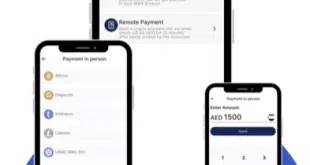At latest count, there are 21 countries that have faster-payments systems in operation. Some, like Japan’s, have been in place for decades. Others, like Denmark’s, have been running for only a few years. And some nations, like the United Arab Emirates with its move to all-digital payments, are laying the foundations for faster-payments regimes.
While most of these payments systems conform to standards such as ISO 20022, none really has a fast and efficient way of linking directly with the system of each of the other countries that handle international faster payments. Links are forged as the volume of payments between pairs of countries reach levels where smoothing the transfer offers a value sufficiently greater than the cost.
A common thread in the approaches of different countries is determining where the sweet spot is on the curve of speed vs. risk. Certainly, reducing from days to hours the time that a payment stands open pending final settlement reduces risk. But, somewhere in the reduction from hours to seconds, the risk inherent in making split-second decisions could be seen as increasing the overall risk in an ultrafast system.
The problem is further complicated by the fact that the speed vs. risk issue is going to be different for different types of payments. For a multithousands-of-dollars payment between two corporate trading parties who are well-known to each other, more speed equals less risk, including the risk of foreign-exchange rate fluctuation. For one-off transfers of a few hundred dollars between two individuals whose relationship to each other isn’t clear, and about each of whom little is known, less speed might be what’s needed to reduce risk, something experienced wire-room operators have long recognized.
Not surprisingly, the smoothest linkages exist between countries that have had high volumes of transactions with each other over long histories, often based on patterns of international trade. We can fully expect to see further fast-payment links put in place as trade volume increases and trade patterns shift. The multinational systems currently in place are mostly used for commercial transactions, especially when measured by amount. With P2P cross-border exchanges, foreign remittances from people back to their home country represent the bulk of volume.
The fact that the value of speed varies greatly depending on whether the transaction is a person paying a person or a company paying a company makes pricing faster payments correctly a complex matter. A look at the large variations of pricing per dollar transmitted that can be found between different countries (and, for that matter, between different banks and money transmitters within a country) makes clear how much the market is still struggling with how to properly price inter-country payments, as may also be the case with faster payments. Moving the electrons is seldom the major component of the price of a transaction. With some countries that seem to have taken a somewhat mercantilist approach, one of the largest factors in a payment’s price can be the taxes and government fees levied.
Now that the Faster Payments Task Force report, The U.S. Path to Faster Payments: Part One, has been published, a vision of what might occur in the U.S. is beginning to emerge. While the picture in this initial public report— developed by more than 300 representatives of financial institutions, payments processors, fintech firms, businesses, and public-interest organizations—isn’t detailed at the level of specific potential solutions, it looks to have been the result of a lot of careful work sorting out the issues necessary for creating a faster-payments architecture.
The Task Force report describes the effort to focus on enabling potential solutions by providing a common statement of desirable functions while leaving features and pricing up to the market. It is evident from the report, which notes that 19 faster-payments solution proposals were independently assessed against effectiveness criteria and reviewed by the Task Force, that a variety of ideas exist about how to do a faster payment.
Whether you are a banker, a fintech startup, a merchant, or a corporate treasurer—or just someone interested in how payments capabilities in the U.S. could be extended—an evening of reading the report will be time well-spent. If nothing else, it will provide a look at just how creative those developing the report have been. Something that augurs well for the county’s payments system.
—George Warfel • GWarfel@haddonhillgroup.com




